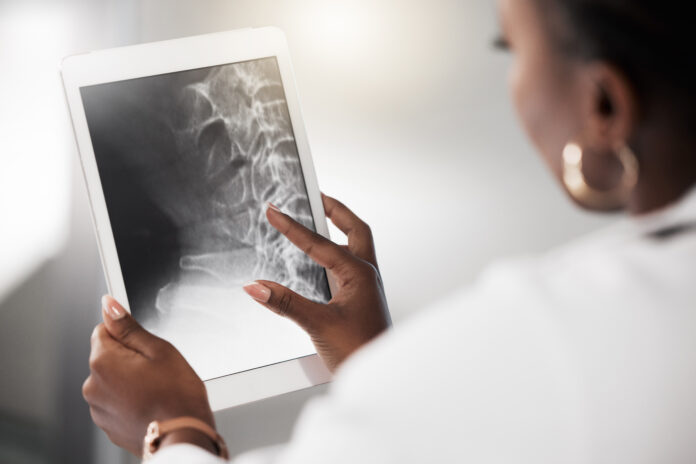
A deep learning model including at least ten demographic and clinical factors is able to predict who has early-stage osteoporosis to a reasonable degree of accuracy, shows research led by the University of Missouri–Kansas City and Tulane University.
As reported in the journal Frontiers in Artificial Intelligence, the research showed that a deep neural network appeared to produce the most accurate results compared to other types of artificial intelligence (AI) based models.
Osteoporosis is a degenerative bone disorder where reductions in bone density lead to progressive bone damage and increased susceptibility to fractures. It is considered a disease of aging, and it is estimated that more than 10 million older people in the U.S. have the condition.
“The earlier osteoporosis risk is detected, the more time a patient has for preventative measures,” said first author Chuan Qiu, an assistant professor at the Tulane School of Medicine Center for Biomedical Informatics and Genomics, in a press statement.
While dual-energy X-ray absorptiometry (DXA) to assess bone density can be used to diagnose osteoporosis, it is relatively expensive and so widescale screening is not currently recommended. This means cheaper and easier methods of diagnosing the condition are still needed.
The current study used bone mineral density, demographic and other clinical data from 8134 people aged 40 years or older who were enrolled in the Louisiana Osteoporosis Study.
The team tested five different AI models to see how well they could predict osteoporosis. These included the deep neural network model and four others: random forest, artificial neural network, k-nearest neighbor, and support vector machine. They also used a standard non-AI based regression model for comparison.
The deep neural network achieved an area under the receiver operator curve score of 0.85 for predicting osteoporosis using 16 factors, which was more accurate than the other models.
Further analysis showed that a very similar level of accuracy could be achieved using just 10 factors to predict osteoporosis. These included: weight, age, gender, grip strength, height, beer drinking, diastolic blood pressure, alcohol drinking, years of smoking, and economic level.
“We were pleased to see our deep neural network model outperform other models in accurately predicting the risk of osteoporosis in an aging population,” said Qiu.
The model requires further testing and validation before it could be used in the clinic, but this research brings this goal closer to reality.
“Our final aim is to allow people to enter their information and receive highly accurate osteoporosis risk scores to empower them to seek treatment to strengthen their bones and reduce any further damage,” added Qiu.












